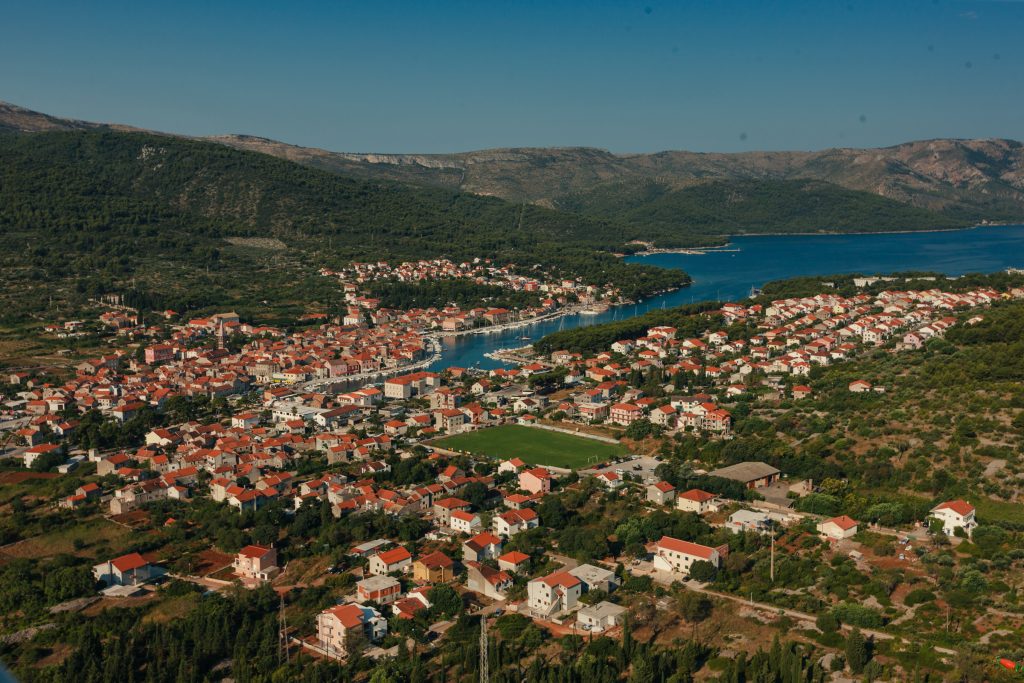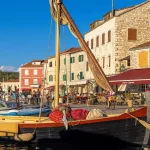With an average of over 2715 hours of sunlight a year, the Croatian island of Hvar offers plenty of fun in the sun. From its series of natural wonders including fresh springs, fruit orchards, lavender fields, and award-winning vineyards, to the allure of its world-renowned nightlife, Hvar is guaranteed surpass even the highest of expectations.
A brief history of Hvar
Did you know that the history of Hvar dates back over 5000 years? The earliest inhabitants of Hvar Island were the Neolithic people in 3500 B.C. During the 4th century, Hvar was initially colonized by Greeks, but following the Roman victory in the Second Illyrian War, the island became a part of the Roman Republic.
The island joined the Kingdom of Croatia in the 11th century but eventually fell under Byzantine rule, before becoming a part of the Kingdom of Croatia and Hungary in the 12th century. In 1409, the Venetian Republic regained the right to rule Hvar for over 5 centuries, before it was annexed by the Habsburg monarchy in 1979.
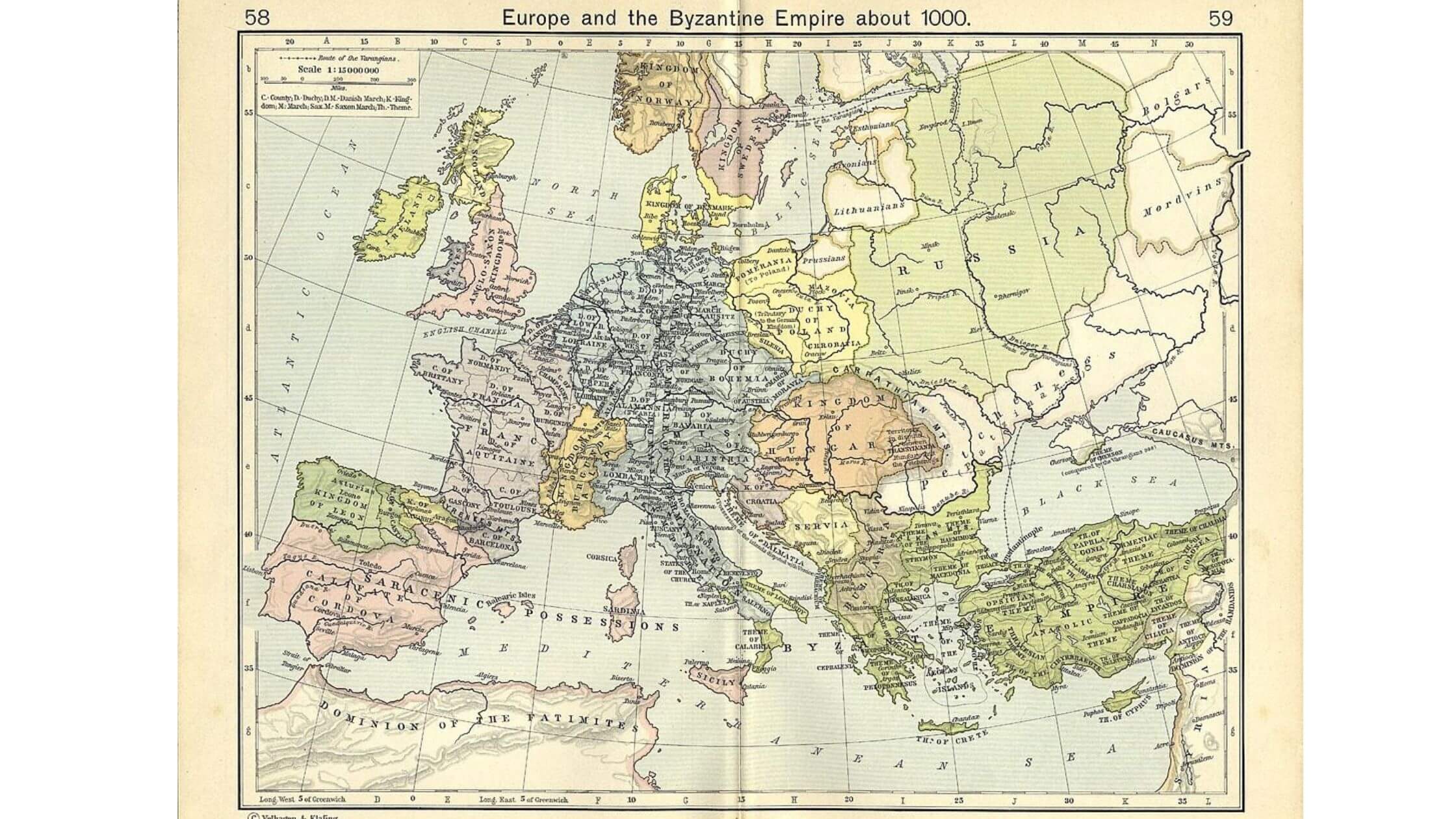
A map of Europe in 1,000 A.D. with the Kingdom of Croatia. (Image: Wikimedia Commons)
Over the next decades, Hvar changed hands a few more times. The French Empire seized the island in 1806 during the Napoleonic wars, before it fell under British rule in 1812. In 1815, Hvar was controlled by Austrians, before it was occupied by the Italian army from 1918 to 1912 under the Kingdom of Yugoslavia. Finally, after the end of WW2 in 1945, it became a part of the People’s Republic of Croatia.
Right, that was essentially Hvar’s 5,000-year history, brutally squeezed into 3 short paragraphs, but since we only have 24 hours, let’s begin a full day of activities in Stari Grad. Not only does this town attract a more relaxed clientele, as you’ll see, it’s also much cheaper than neighboring Hvar town!
8.30 a.m – 10.30 a.m.
The majority of Hvar visitors begin their trip at the Split ferry terminal. In Summer, the state-owned Jadrolinija ferries or catamarans run regular service lines to 3 different ports on Hvar: Split-Hvar, Split-Jelsa, and Split-Stari Grad.
From Split-Hvar, a catamaran runs almost every other hour, with the earliest ferry leaving Split at 8.30 a.m. Prices for the catamaran are the same for both children and adults, at 110 kuna (€14.50) one way. The Split-Jelsa catamaran first detours to Bol on Brač island (so the line really is Split-Bol-Jelsa), and only runs once a day, departing Split at 4.30 p.m. Tickets are 63 kunas (€8.40) per adult and 30 kunas (€4.00) for children between 3-12 for a single trip. Do note that the catamarans are foot/pet traffic only!
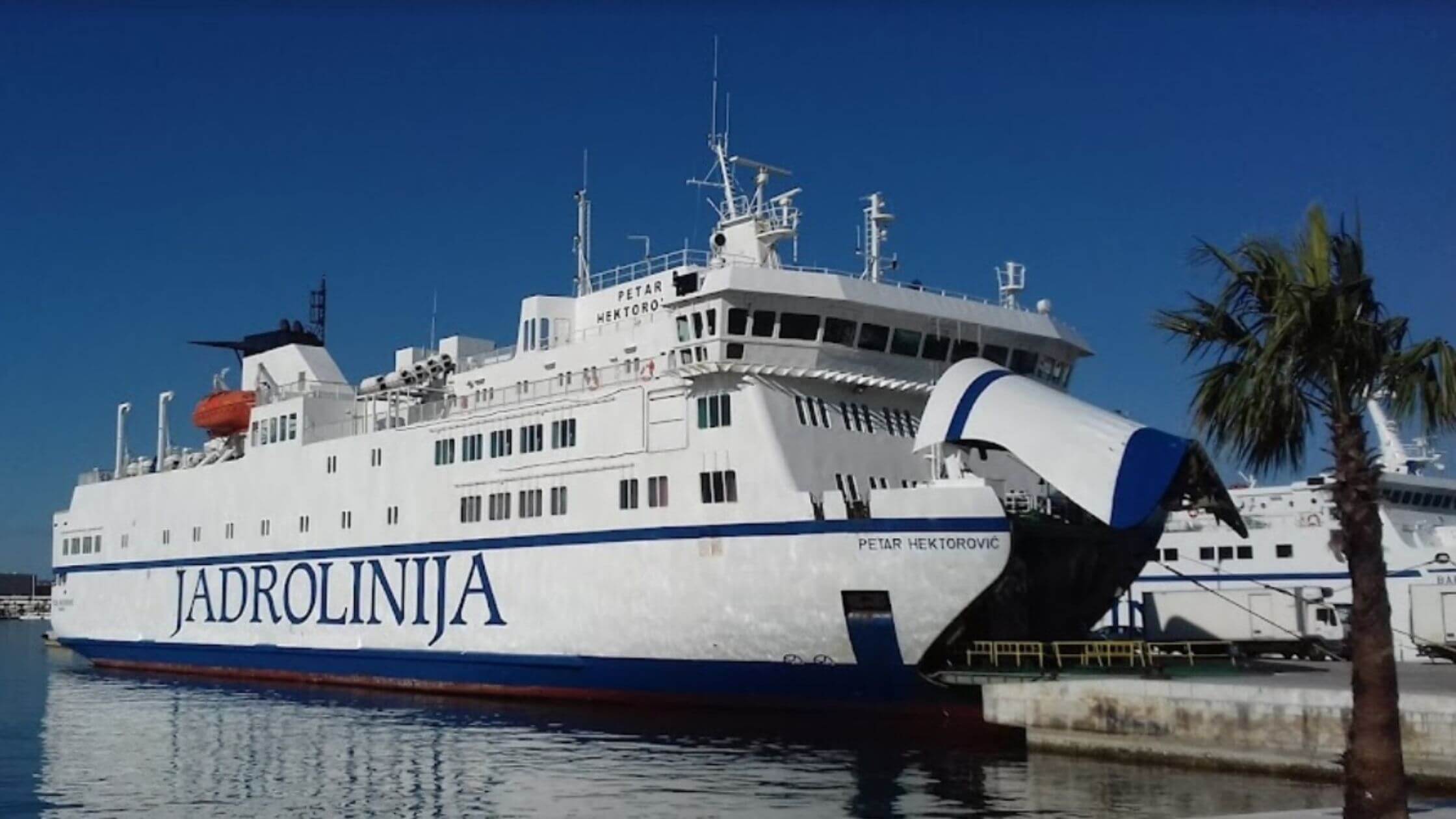
(Image: Stipo Rajic/Screenshot)
Finally, we have the ferry line that will kick start our trip from Split-Stari Grad. Leaving Split as early as 1.30 a.m., the Split-Stari Grad ferry service runs 7 times a day at the peak of the season. Since it’s a ferry, you’ll be able to drive your vehicle on board so if you’ve rented a car in Split and intend to drive it over Hvar Island, this will be your port of call as well. Prices start at 55 kunas (€7.40) for an adult and 27.50 kunas (€3.70) for children 3-12, for a one-way journey.
10.30 a.m. – 11.30 a.m.
A 2-hour ferry ride later and you’ve arrived in Stari Grad, Hvar Island. The first thing to do is to drop your bags off at your accommodation and make a beeline to Stari Grad’s palm-lined Riva.
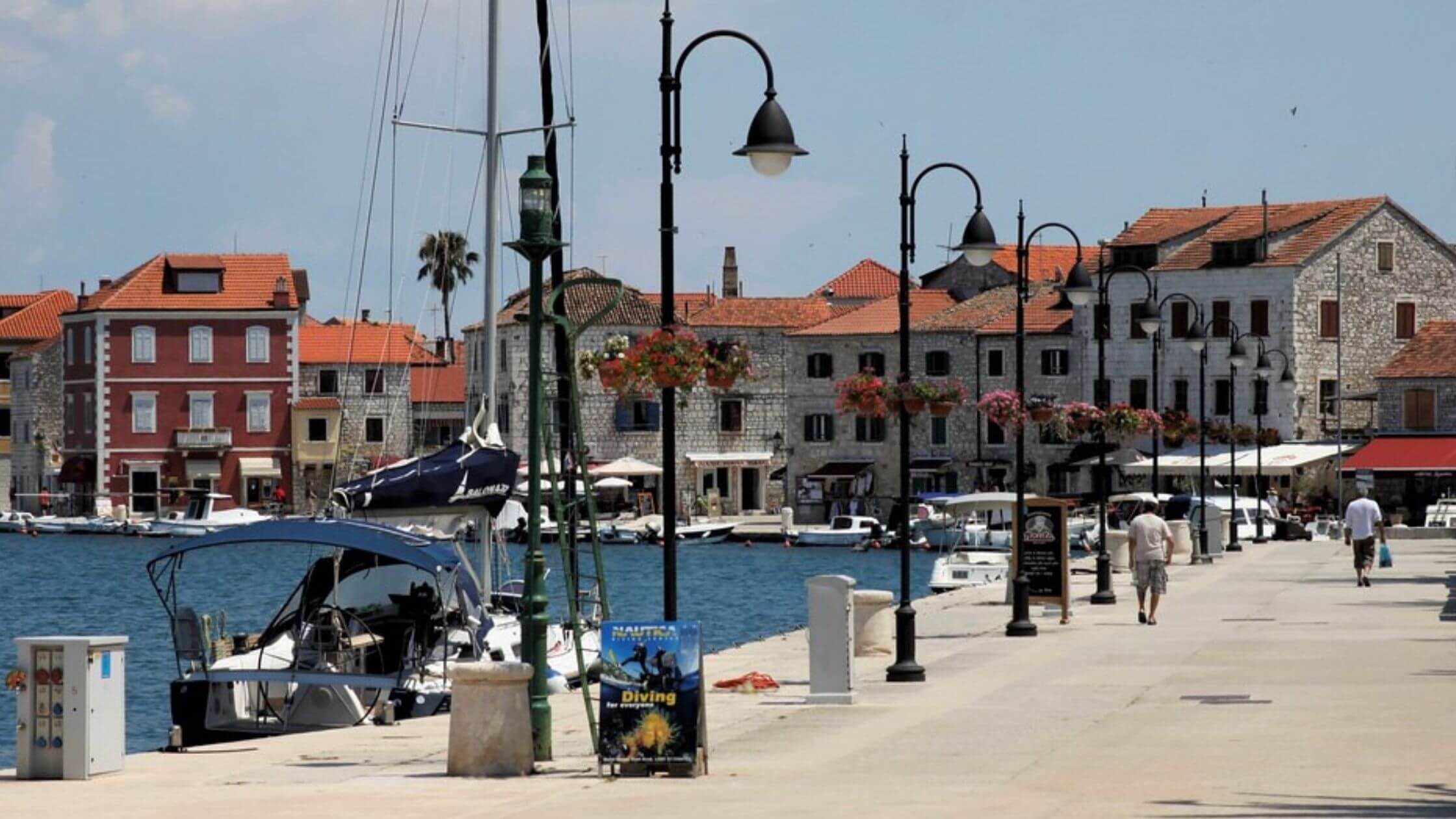
There’s no better place to relax and let your mind wander. (Image: Pixabay)
Surrounded by Venetian Renaissance buildings, the Riva is the heartbeat of the city. Here, you’ll find everything you need including cafes, bars, restaurants, souvenir stands, boutiques, and grocery stores. It’s perfect for a spot of people watching while snacking on some Burek (Croatian flakey pastry filled with a combination of cheese, meat, and spinach) with your coffee or Aperol Spritz (I mean, you’re on vacation, and its noon somewhere, right?)
11.30 a.m. – 1.30 p.m.
With your energy levels renewed, time to do some exploring! For 20 kunas (€2.65), head on into Tvrdalj fortress, the summer residence of Croatian Poet Petar Hektorović (1487-1572). Cocooned in this oasis, Hektorović produced some of his finest poetic works on Hvar’s fishermen such as – Ribanje i ribarsko prigovaranje, 1568, eventually becoming a vital figure in Croatian literature during the Renaissance period.
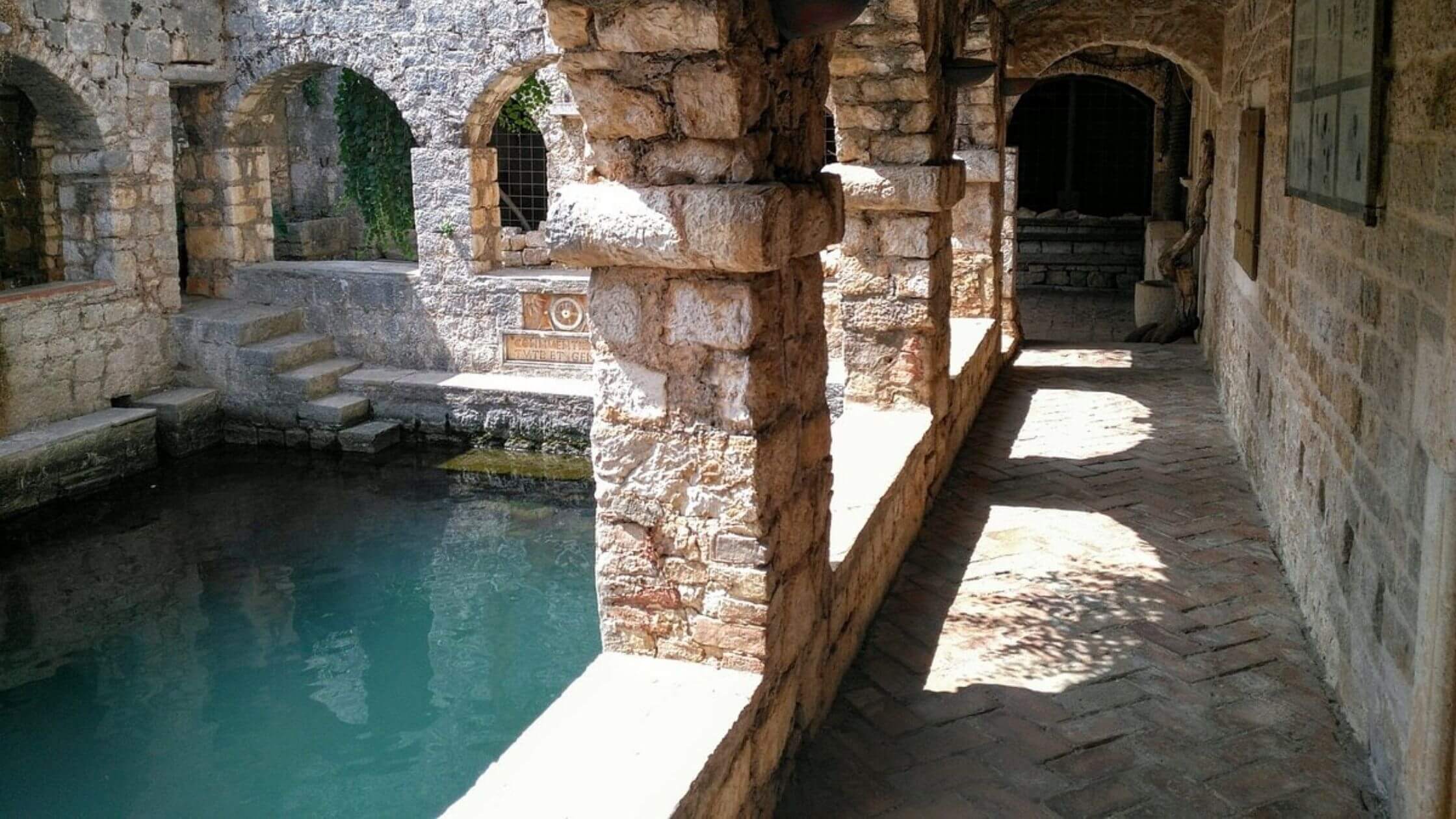
Step inside the calm of Tvrdalj fortress. (Image: Alain C.)
In the vicinity are also a series of churches such as the Church of St. Stephens, built-in 1605 on the same site of a previous cathedral that was destroyed in 1571 during a Turkish invasion. There is also the church of St. John which houses archaeological remains of the original building that dates to the 5th or 6th century, and the church of St. Petar Muenik and the Dominican monastery that was founded in 1482.
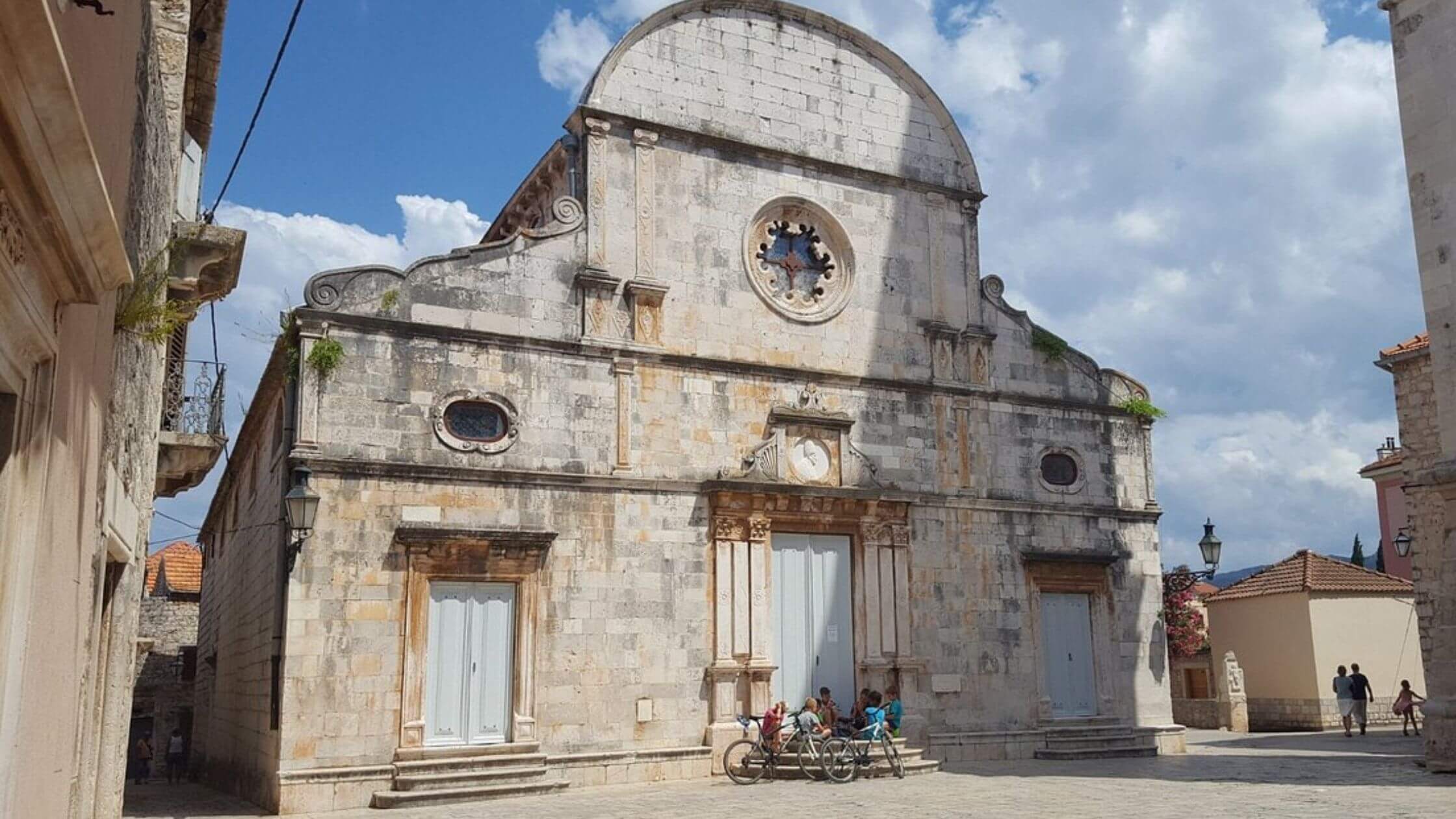
Church of St. Stephens. These churches contain many important artworks by famous Venetian artists which are still on display today. (Image: Rory321)
Make sure to make time for wandering around the backstreets of Stari Grad to admire the architecture and take the opportunity to stop by Škor Square for a series of highly-instagrammable pictures. If Mamma Mia had another prequel (or sequel?), this be an ideal setting with its curved archways, stone houses, shuttered windows, and quaint staircases.
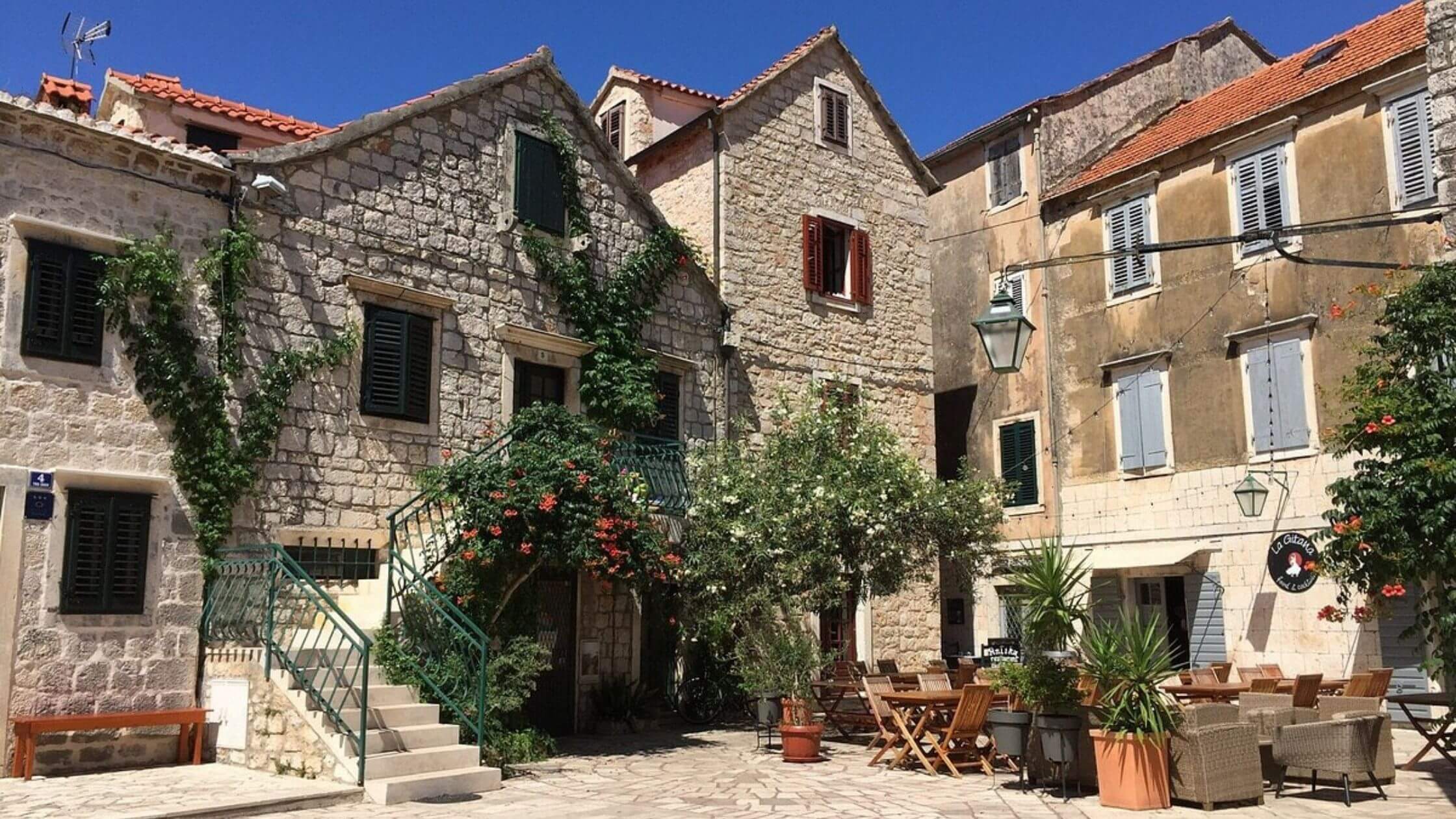
The word škor derives from the word škver, meaning shipyard in the Dalmatian dialect. (Image: Chrissieb94/Tripadvisor screenshot)
Also wander along Srinjo Kola (translated to: Middle Street), one of the busiest and largest streets on Hvar Island during the 1870s and 80s, when maritime trade in the region was at its peak. Once bustling with merchants and traders from all over Europe, Srinjo Kola today has more of a bohemian vibe, housing quaint cafes and traditional souvenir stores. Don’t forget to peek at the ancient Roman mosaic discovered during an excavation last year!
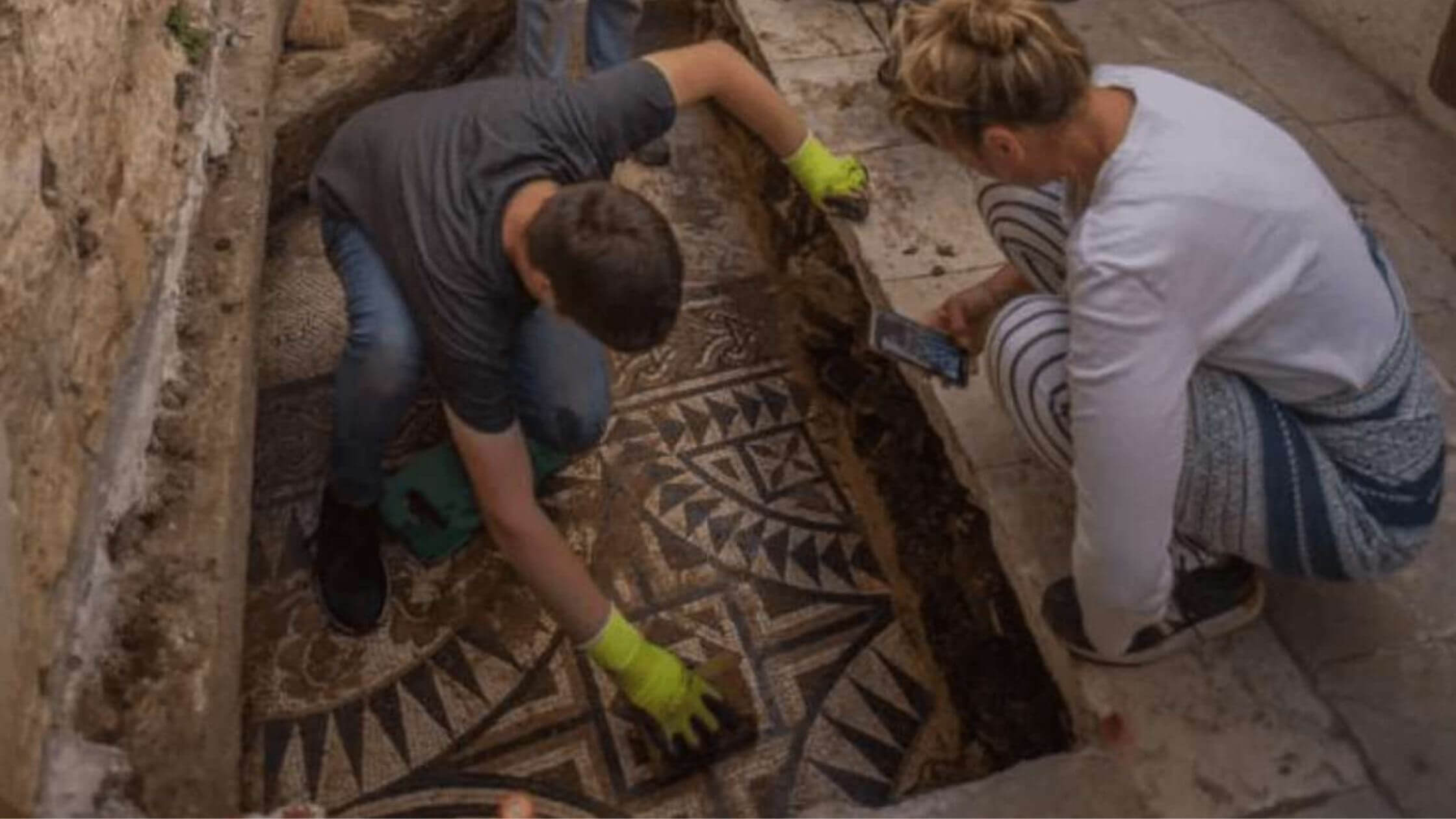
(Image: Vilma Matulic)
1.00 p.m. – 2.00 p.m.
Time for lunch! Before moving to Croatia, I had no clue that the pizzas here were outstanding. I guess it’s difficult when you’re overshadowed by neighboring Italy who arguably invented the dish. But what’s not to like about a wood-fired, slightly charred thin crust, tangy tomato base with innovative toppings? And the icing on the cake, it’s a quick, cheap, and filling meal on its own.
So, you know where this lunch recommendation is going. Head on over to Mola Podloža and treat yourself to a Pharos pizza – think breakfast in pizza form, complete with bacon and runny egg. This, paired with an ice-cold beer makes a perfect lunch in my books, all for around 100 kuna (€13).

Dalmatian prosciutto makes a fantastic pizza topping. (Image: Pixabay)
2.00 p.m. – 5.00 p.m.
As much as you’d want to take a nap right now, I’d suggest a visit to the Stari Grad Plains. Stari Grad is home to one of the oldest cultivated plains in the world which dates back over 2,400 years when the Greeks colonized Hvar Island in the 4th century.
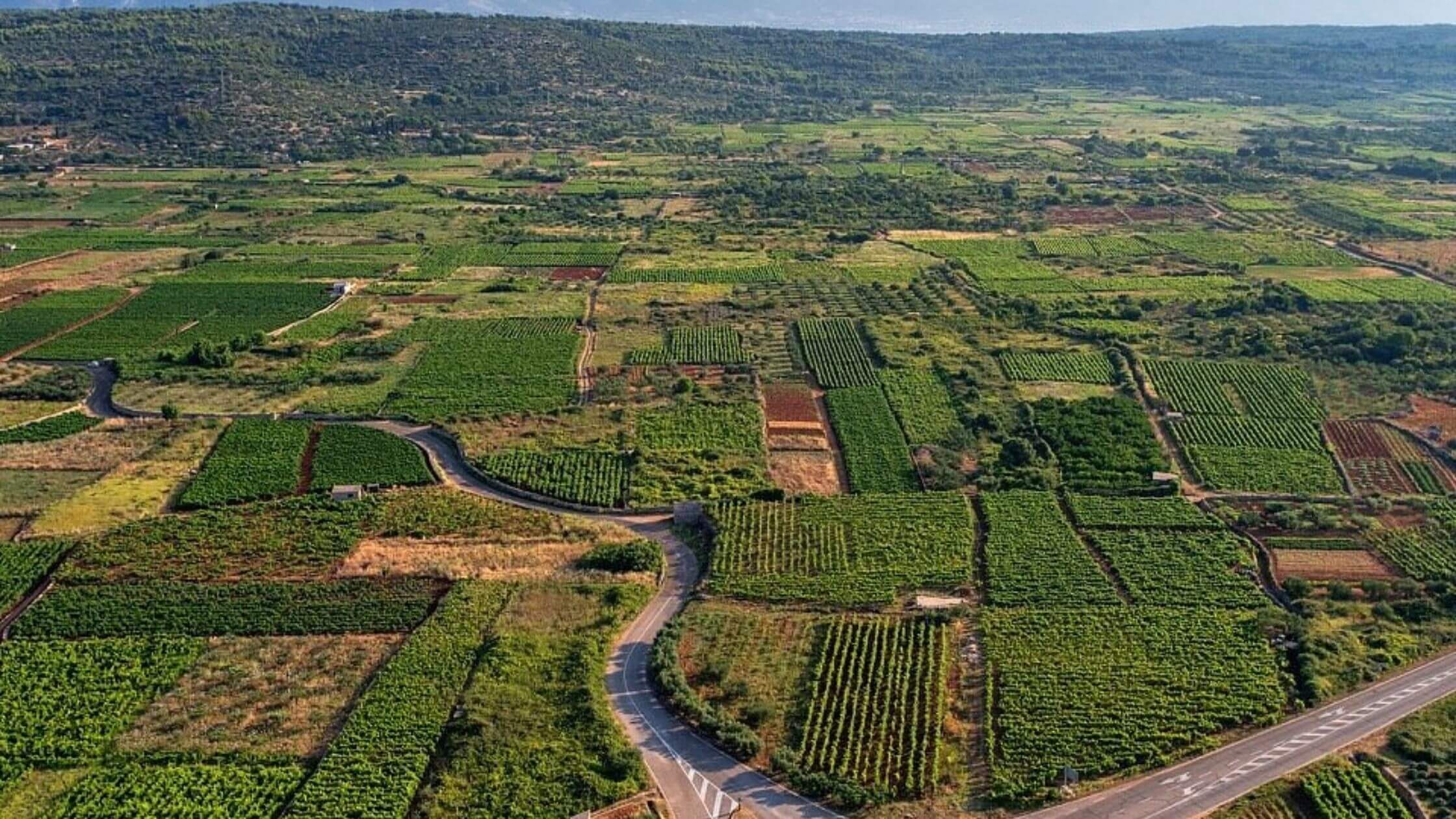
The same crops from centuries ago still grow today. (Image: Visit Hvar tourist board/Facebook screenshot)
For over 2 millennia, locals have maintained the plans in almost their original form, so much so that in 2008, the plains were declared a UNESCO world heritage site for being one of the last remaining ancient Greek agricultural plains in the Mediterranean. Today, they grow the same crops as the 4th century Grecians – olives and grapes, producing some of the best olive oil and wine in the world.
While you can opt to walk around the plains, I’d prefer to rent a bike at one of the many kiosks clustered along the Riva and explore at your own pace. Stop and check out the ancient ruins along the way, sample some olive oil, or enjoy a glass of local wine at one of the restaurants in the area (e.g., Hora, Rugonj, Dionis). The best time to visit is from end-May to mid-July since it coincides with the Lavender Festival, and you’ll be able to avoid the intense heat of high Summer.
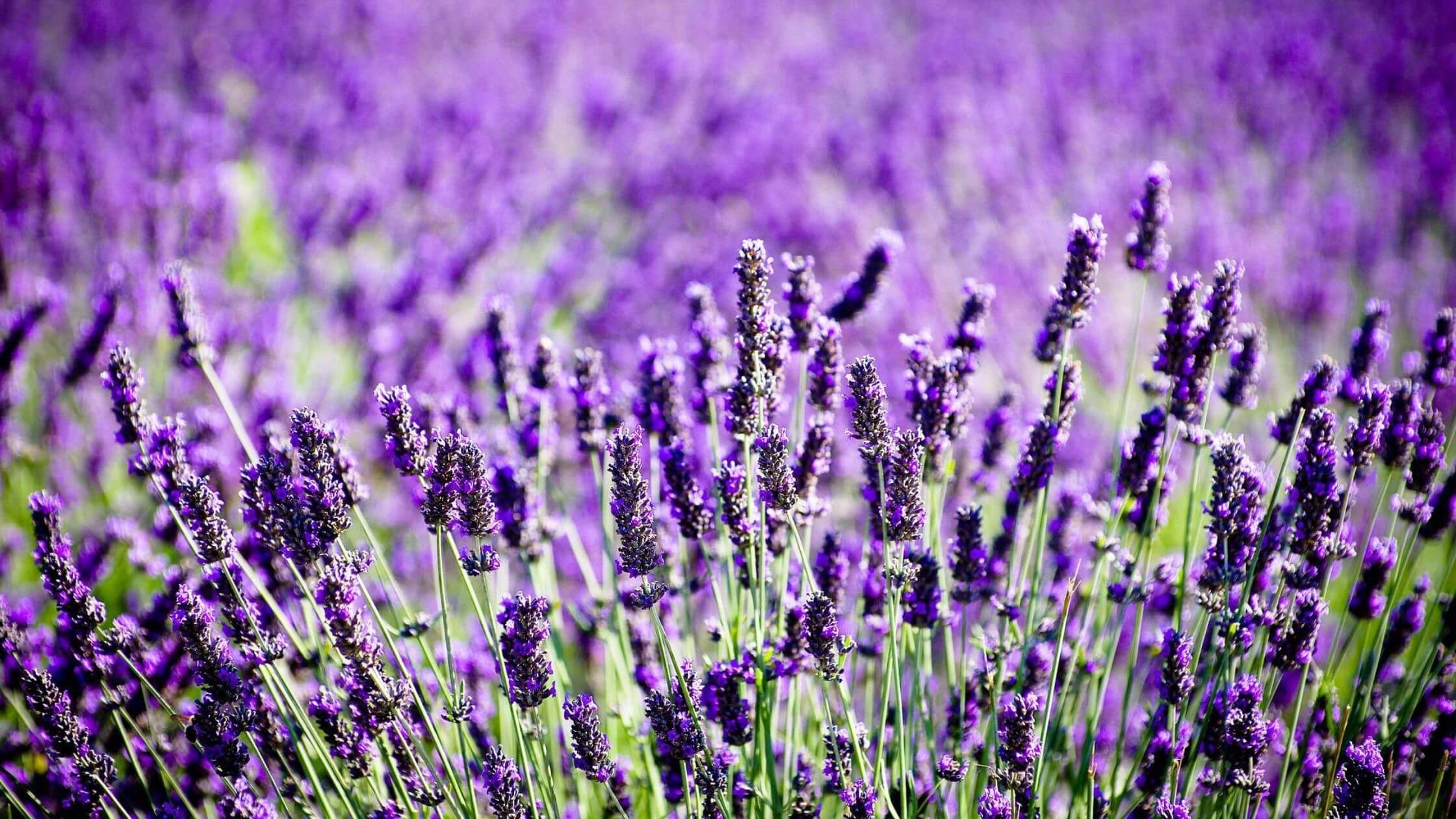
Lavender bushes bloom between May-July. (Image: Pixabay)
5.00 p.m. – 6.30 p.m.
After returning your bikes to the Riva, it’s time to head back to your hotel to complete the check-in process and freshen up for a casual evening in Stari Grad.
6.30 p.m. – 8.00 p.m.
For our final activity today, you may want to watch the sunset from Glavica Hill. While Glavica Hill is considered a hike, I’ve made it up with relative ease in just sandals (not the heeled kind though!). The path is well marked, and the entire trail is shaded by Mediterranean pine trees which provides some reprieve from the afternoon heat.
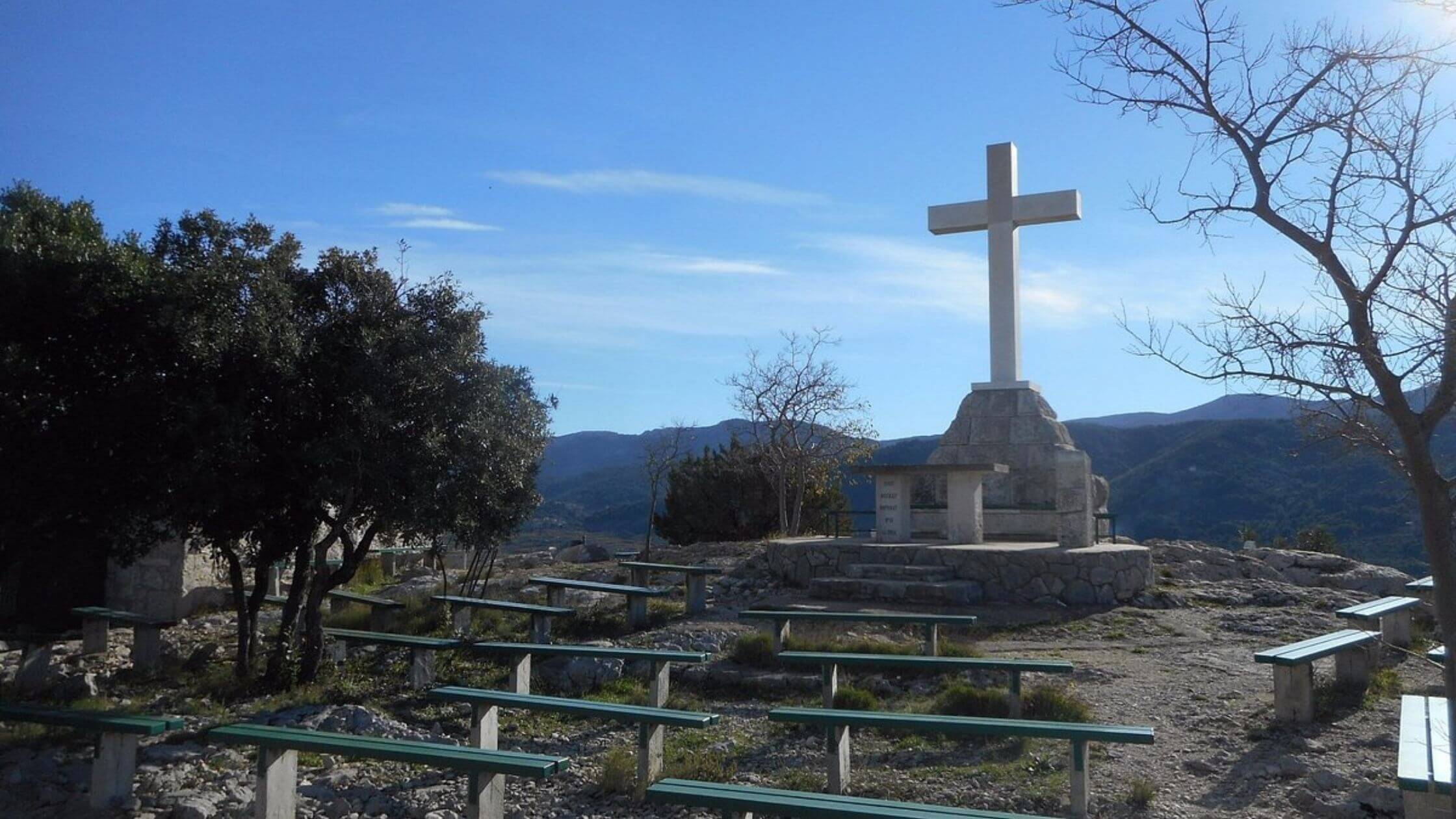
A breathtaking view awaits you at the top of Glavica hill. (Image: Steven D/Tripadvisor screenshot)
Before starting the 20–25-minute walk to the top, head to a grocery store or TISAK to grab a couple of drinks, so that you’ll be able to sit and watch the sunset as it illuminates Stari Grad and the neighboring island of Brač. The sunsets in Croatia are some of the most dynamic I’ve ever seen, with the horizon turning shades of blues, purples, oranges, and pinks before the teal blue of the evening blankets the sky.
8.00 p.m. – 10.30 p.m.
After a day of walking and biking, time to wind down at one of the most authentic, family-run restaurants in the city – Blue Doors Restaurant. With its courtyard seating, you’re treated to stunning views of the harbor, augmented by warm service and a romantic atmosphere, complete with dim lighting and soft music.
Try their seafood plate for 2, piled high with fish and seafood freshly caught that morning, and a Dalmatian signature, the black risotto made with squid ink. No meal is complete without a refreshing bottle of their own Prošip or Graševina, perfect for sipping on a warm summer evening while watching the fishing boats bob along with the gentle waves.
With such an activity-packed day, it might be time to wrap things up in Stari Grad in preparation for Part 2 in Hvar town where we’ll kick start the day with one of my favorite cafes on the island.
How to get from Stari Grad to Hvar by bus?
Getting around Hvar Island without your own ride is quite straightforward. There is only one bus service between Stari Grad-Hvar run by Čazmatrans. Bus services begin at 6.30 a.m. and run 7 times a day for the 30-minute journey, which costs around 25 – 35 KN (€3.50 – €5) per trip which you pay with cash when you board.
You may have noticed that our 24 hours in Stari Grad did not allocate any beach time in the crystal waters of Hvar Island, but the fun’s not over! I promise there’ll be plenty of time in the sun and sea when we reach Hvar Town. So, continue to watch this space for suggestions on spending 24 hours in Hvar Town!
(€1 = 7.54 kuna)
For more on travel in Croatia, follow TCN’s dedicated page.

